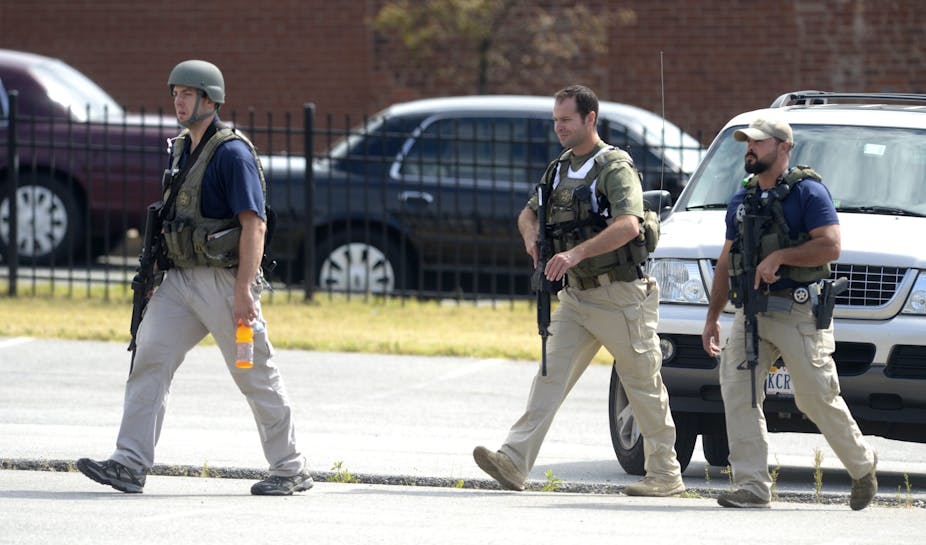I’m currently residing in North Carolina, a state where, in only a handful of days, a law will come into effect that permits evermore concealed weapons in evermore places. You know, like bars for example. Because alcohol and firearms make for a really top notch night.
Guns, needless to say, are something often on my mind here.
As I type this I am entering my 12th hour of coverage of the shootings at the Navy Yard where so far we know at least 13 people have been killed. Not quite eyes-fixed to the TV – I don’t have that kind of attention span - but it’s been on and I’ve been dipping in and out.
At one of the earliest press conferences, a doctor from a DC hospital was being hurled questions from jostling journos. At one point he was talking about a specific fatality and one query - loud enough to rise above the throng - centred on which side of the head the bullet went through.
Not that I needed proof that the coverage of Grand Crime is gratuitous, but I got it. Equally so – as I waited for the doctor’s answer - I probably didn’t need extra evidence that my own interest in this story, my own guilty consumption of it, encourages its production.
Media coverage of terrorism and mass shootings raise any number of angles for analysis. My interest is those very angles. The creation of a story in the absence of one. The rolling, round-the-clock guff that comes to constitute content when facts, figures and fragments of firearms aren’t yet at the media’s disposal.
A story like the Navy Yard shooting - with a military and therefore “national security” undercurrent - means cards will undoubtedly be kept close to chests. So what’s there for the talking heads to blab about for hours on end? How do the dozens of television news networks – not to mention radio and online media – fill content when a paucity of facts exists?
Eyewitness testimony.
Endless interviews with people who worked in the vicinity, who were nearby, who just might, perhaps, maybe have heard something, saw something.
If anything stands out from 12 hours of coverage, it’s the interviews – invariably contentless – with a stream of Washingtonians, each willing to give the rapacious media precisely what they want.
One doesn’t need a criminology or law degree, of course, to be aware that such testimony is widely considered completely worthless. Aside from things such as the cross-race effect (“all black people look the same”) and our memories not functioning like a DVD player, human recall is sketchy at best.
But given the dearth of detail, that “on the ground”, flesh and blood content is gold. Afterall, there are only so many times footage of speeding ambulances and police cordons can entertain.
I understand that a story isn’t one unless there’s something in there that taps into audience values. The human factor – that real people, just like us were involved – personalises the event and makes it seem relevant; makes round-the-clock coverage seem justifiable.
And yet the very appeal of these witnesses in humanising a story are equally the things that make the coverage least compassionate. In pursuit of content, in pursuit of angles, in pursuit of bringing the story home, there is something rather disgusting about “politely” interrogating people barely moments after they experienced the scariest moment of their life.
Do we need to hear witnesses crying and reliving “pop pop” sounds? Is the bloke who swears it was a “bang bang” noise really fulfilling any lines of enquiry? Are these interviews about information gathering or in fact, as I suspect, just an opportunity for an audience to consume the pain of others?
Tears and breast-beating, torn clothing and blood stains make “good” contact, make a story real. The delivery of such reality however, comes at a cost. For a few sentences of garbled observations a traumatised bystander gets turned into polyfiller.
That CNN is doing it, however, somehow makes it seem less perverse.

